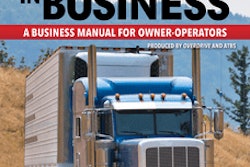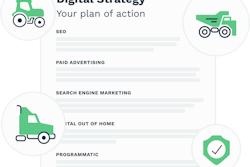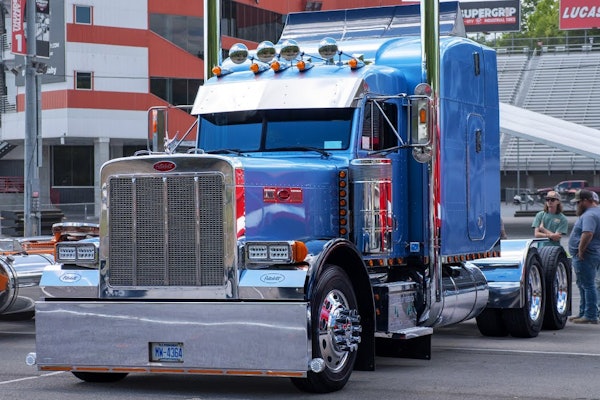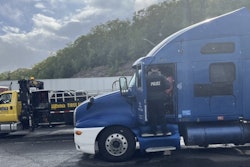Owner-operator business services firm ATBS on Tuesday, September 30, hosted its semiannual session updating clients and other owner-operators with trucking-business trends data derived from aggregation of real-world performance stats tracked now for a quarter century.
- On an annualized basis, comparing the 12 months ending with the second quarter of 2025 to the prior 12 months, bedrock income for ATBS clients was up 2.5%.
- Owners in every segment but one among ATBS clientele posted gains, with leased flatbedders leading the way to more than $71K in annual income. Only leased reefer haulers retreated, a couple percentage points to roughly $60K.
- Fixed costs for owner-ops, including truck payments, continued to rise, with variable costs falling with fuel prices and increased efficiency.
- The most quickly rising cost bucket? Maintenance, now costing the average owner-operator 14 cents/mile.
- Fleets who lease owner-operators are seeing modest contract rates gains, yet remain hopeful for "a catalyzing event," in the words of ATBS President Todd Amen, whether further interest-rate-cut juice to the economy or positive impacts from "foreign driver capacity" reduction.
ATBS Vice President Mike Hosted, leading the 5 p.m. Central session for client owner-operators, admitted he'd given up on big prognostications of where the broad spot and contract freight markets might go through the remainder of the year. That's after three consecutive years of freight-market watchers around trucking predicting potential second-quarter recovery that failed to materialize. Rather, markets continue in a three-year lull, many calling it a "freight recession" absent any official recession designation for the wider economy.
In the prior, March update this year, Hosted's then also-admittedly-cautious optimism about such recovery hinged on positive signs for flatbedders in the spot market that would come crashing down after April.
"Things got really great in April," relatively speaking, Hosted noted, as shippers seemed to move a "whole bunch of freight early. People were loading up their docks afraid of tariffs."
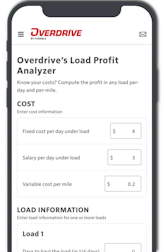
[Related: Prospects for a 'phenomenal' flatbed year: Trucker of the Month George Kincaid]
Volumes have fallen back since.
 At the end of June, the Truckstop.com load-to-truck ratio sat at about 95 posted loads for every truck posted to the board, and rates minus an estimated average fuel surcharge of 43 cents/mile were at $1.88, a number Hosted noted the spot average has been bouncing around since.ATBS, Truckstop.com data
At the end of June, the Truckstop.com load-to-truck ratio sat at about 95 posted loads for every truck posted to the board, and rates minus an estimated average fuel surcharge of 43 cents/mile were at $1.88, a number Hosted noted the spot average has been bouncing around since.ATBS, Truckstop.com data
Excluding the brief tariff-threat-inspired April rise, that 95 loads per truck ratio Hosted called just about the "best we’ve seen since the pandemic." In his view when it comes to freight volumes and rates, the market's ending its ebb at a low "equilibrium. It's not getting worse, but not getting better either," necessarily.
An influx of truck purchasing by carriers of all shapes and sizes, many of them newly with authority, during the pandemic continues to mean capacity remains abundant. Trends in authorities granted and revoked, though, have been largely negative, that is, with more revoked than granted, for much of the year. It's unfortunate for those who've gone out of business, Hosted noted, yet "more exits is a good thing. We need motor carriers to fail to get back to equilibrium" with respect to capacity.
ATBS President Todd Amen noted many around trucking are hopeful for a shock to the system, whether more juice for business and consumer spending in the wider economy with further interest-rate cuts or something else. Speaking to an audience of fleet personnel among ATBS-partner and other carriers with big leased-owner programs, Amen noted many among fleets are "hoping for a catalyzing event," he said. "The downturn started with Russia invading Ukraine," sending fuel prices soaring and prompting belt-tightening all around the United States and the world. Yet a big event sparking a downturn might well be more common in economic history than the reverse.
"What most people are holding hope out for," Amen added, is a potential swift reduction in "foreign driver capacity," with an uptick in English language proficiency enforcement and, though he didn't specifically reference it, the Department of Transportation's recent emergency rule provisions around non-domiciled CDL issuance to non-immigrants like asylum seekers without select visas.
"If the current administration shuts down foreign capacity like they did the Southern border," a good impact for rates could result, he added.
[Related: DOT hopes to force 194,000 non-domiciled CDL holders out of trucking]
Owner-operator halftime adjustments continue to deliver income gains
Income performance for most owner-operator businesses among ATBS clients bottomed out and then turned to the positive around the fourth quarter of 2023 after adjustments made to deliver efficiency gains. That trend has continued for most segments, despite revenues over the time period showing a slow downswing at various points.
 ATBS
ATBS
That's also true for the most recent 12-month analysis, Hosted noted, as owner-operators continued to increase miles-run to make up for rates losses. "Revenue per mile ... is down 7 cents a mile" as of June, yet the loss is accounted for "100% by the fuel surcharge," with pump prices down near exactly that much.
 Owner-operator income tracked higher every month of the "trailing 12 months" (ttm in the chart) between July 2024 and June 2025 but for December and February-March, delivering an aggregate 2.5% rise in average owner-operator income. Refrigerated owners were the sole outlier among segments. A good sign for future market improvements, Hosted noted, are flatbed gains of more than $5,700 in income for the entire 12-month period. Flatbed wins can signal wider economic improvements to come.ATBS
Owner-operator income tracked higher every month of the "trailing 12 months" (ttm in the chart) between July 2024 and June 2025 but for December and February-March, delivering an aggregate 2.5% rise in average owner-operator income. Refrigerated owners were the sole outlier among segments. A good sign for future market improvements, Hosted noted, are flatbed gains of more than $5,700 in income for the entire 12-month period. Flatbed wins can signal wider economic improvements to come.ATBS
Real gains have come from better efficiency with cost control, as fixed costs overall were actually up another 2% to 60 cents/mile, looking back over a year, Hosted said. Fuel mileage for the average ATBS client rose slightly after bigger gains in prior years to just more than 7.1 miles per gallon, helping offset other cost increases, too, none bigger than maintenance outlays in the last year.
 "Maintenance is up 10% year-over-year" in owner-operator costs, Hosted noted, showing the extent of the damage with this slide in his presentation. "Parts cost more, labor costs more, and people have been running their trucks longer." Miles are up, too, of course, which means more maintenace. All of these are "obvious factors," Hosted added, yet he warned owners in the audience about the temptation to defer needed maintenance, suggesting some owners reflected in the data may well have done that and now the chickens have come home to roost in the form of bigger repair bills reflected in the numbers.ATBS
"Maintenance is up 10% year-over-year" in owner-operator costs, Hosted noted, showing the extent of the damage with this slide in his presentation. "Parts cost more, labor costs more, and people have been running their trucks longer." Miles are up, too, of course, which means more maintenace. All of these are "obvious factors," Hosted added, yet he warned owners in the audience about the temptation to defer needed maintenance, suggesting some owners reflected in the data may well have done that and now the chickens have come home to roost in the form of bigger repair bills reflected in the numbers.ATBS
On the whole, though, even with maintenance spending up, costs overall fell 2% for the 12-month lookback, driven by variable cost reduction of nearly 6%, almost all of it accounted for by fuel-price reduction and improved efficiency.
"The average owner-operator is paying about $1.26 a mile" in variable costs to get the truck down the road in the current environment, Hosted said. Add a broad fixed-cost average (including insurance, truck payments and the like) of 60 cents to that for an overall cost of $1.86/mile, not including any pay to the operator. That shows up in the income figure of an rough 66 cents/mile, as shown above.
More wild cards are in the cost metrics, though, with truck payments way up since the pandemic. Three years ago the average truck note outlay sat around $2,300/month for ATBS clients, but it's $2,900 in the most recent analysis. "I was optimistic about used prices until the tariff announcement" late last week, said Hosted. As Overdrive's CCJ sister publication editor Jason Cannon noted, depending on how the details shake out, tariffs could yield swift further price increases for new trucks.
[Related: New truck tariff will spark 'major increase in equipment cost']
If that happens in a big way, "we may see fewer orders for new trucks," said Hosted, reducing the pipeline of used equipment in the market and increased used-truck demand. Big "fleets might start looking in the used market, as new prices go up."
It's a known unknown, though, in terms of how tariff dynamics for truck equipment will play out. "I don’t have a magic wand for this at all," he added.
For owner-operators in it for the long haul, the trend is positive when it comes to real income performance, more positive even than the broad averages discussed here. The shifting freight sands coming out of the pandemic have seen shippers continue to exercise use of spot opportunities in search of ways to control their own contract costs beyond the "core carriers" they might have used previously, said ATBS President Amen. Shippers are utilizing brokers more and more who leverage technology with owner-operator and small carrier partners for more efficient matching after the big contract run-ups during the pandemic.
Amen cast the impacts of those run-ups in both spot and contract freight volumes and rates as having "forced shippers to find capacity in ways they never had before. Rates exploded like many of our inflationary costs," he said. Traditional relationships between big carriers and shipping departments fractured as shippers' "costs got out of control and it became a big budget item."
As the market turned sour in 2022, leaders in those departments pushed bid packages out to not just their traditional core carriers but "brokers and everybody," including small owner-operated fleets, Amen said, seeking to "drive transportation costs" as low as possible.
Amen painted that picture as background for what he's hearing from big fleets now -- like Hosted noted, the bleeding on rates seems to be stopped, at least. Large fleets he's talked to recently aren't seeing any big increases in their contracts with shippers, yet 2%-3% has been commonly cited. Smaller but still sizable carriers who may have grown too quick and are now struggling, or who simply gave up the ghost and shut down in recent times, aren't hard to find.
Creating capacity is going to be more difficult for all those parties "as the market turns," Amen noted, potentially good news for business for the owner-operators who've weathered the storm with their business intact, profitable.
[Related: Used-truck prices hold steady, as spot market signals a measure of demand improvement]

